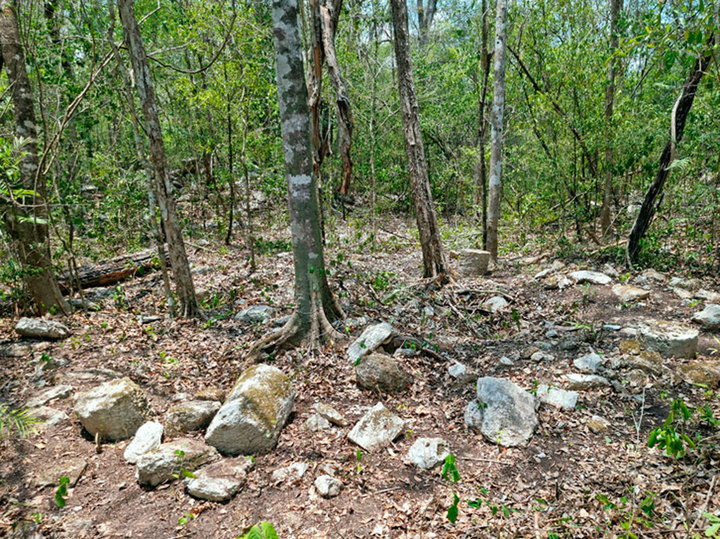Tall pyramid-like structures found
Archaeologists in Mexico have discovered the remains of an ancient Mayan city deep in the jungles of the Yucatán Peninsula. Scientists have discovered several pyramid-like structures over 15 meters high.
 Photo: National Institute of Anthropology and History
Photo: National Institute of Anthropology and History
The ancient city has been discovered in the jungles of southern Mexico, the Mexican Institute of Anthropology reported recently. Believed to have been an important center thousands of years ago, this city includes large pyramid-like buildings, stone columns, three squares with imposing towers, and other structures arranged in almost concentric circles.
Pottery discovered at this site seems to indicate that it was inhabited between AD 600 and 800, during a period known as the Late Classic.
According to the BBC, archaeologists have named it place Okomtun (in the Mayan language — «stone column»).
The Maya are believed to have been one of the greatest civilizations in the Western Hemisphere, famous for their pyramidal temples and majestic stone buildings in what is now southern Mexico, Guatemala and Belize.
 Photo: National Institute of Anthropology and History
Photo: National Institute of Anthropology and History
These latest finds were made in an ecological reserve in the state of Campeche, an area so heavily vegetated that it has been little explored.
The National Institute of Anthropology and History of Mexico (INAH) said its discovery was the result of fieldwork aimed at documenting the archeology of the Central Maya Lowland, an area covering 3,000 square kilometers of uninhabited jungle.
According to the Institute of Anthropology and History of Mexico, an aerial laser scan conducted by the University of Houston helped the research team discover «numerous accumulations of pre-Hispanic structures.»
Ivan Spreitz, who led the team of experts, said what surprised them the most the discovery of a hill surrounded by wetlands.
 Photo: National Institute of Anthropology and History
Photo: National Institute of Anthropology and History
In this elevated area, scientists have discovered several large buildings, including several pyramidal ones over 15 meters high.
«The site served as an important regional center,» Ivann Spreitz said in a statement released by Mexico's National Institute of Anthropology and History.
The cylindrical stone columns that prompted the researchers to name the site Okomtun probably served as entrances to rooms in the upper parts of the buildings, the scientist added.
According to the expert, this site probably underwent significant changes between 800 and 1000 AD before falling prey to the collapse of the Plains Maya civilization in the 10th century.


